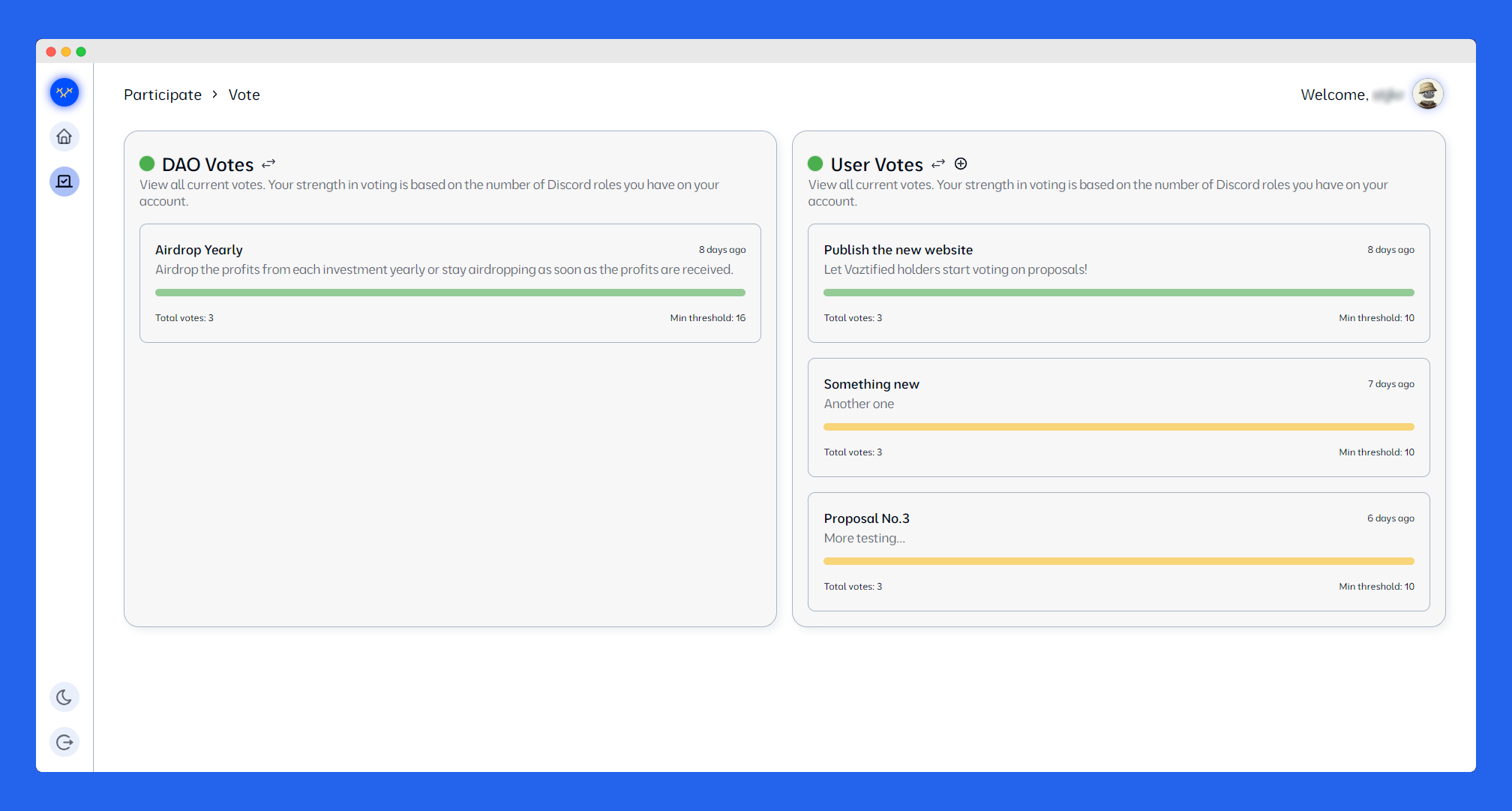Voting Platform
Tech stack: Next.js, PostgreSQL
The Voting Platform represents a groundbreaking approach to decentralized governance, specifically designed for NFT communities seeking transparent and democratic decision-making processes. This custom-built solution enables NFT holders to participate meaningfully in project governance through secure, blockchain-verified voting mechanisms.
Developed as a commissioned project for a forward-thinking NFT collective, the platform addresses the growing need for community-driven governance in the Web3 space. The system validates NFT ownership through blockchain integration, ensuring that only legitimate holders can participate in voting processes while maintaining user privacy and security.
The technical architecture leverages Next.js 14 for optimal performance and user experience, combined with PostgreSQL for robust data management and vote integrity. The platform includes advanced features such as proposal creation, voting weight calculation based on NFT holdings, real-time vote tracking, and comprehensive result analytics.
Security measures include multi-signature verification, vote encryption, audit trails, and protection against common attack vectors such as double voting and vote manipulation. The user interface is designed to be intuitive for both technical and non-technical community members, featuring clear proposal descriptions, voting instructions, and result visualizations.
Key functionalities include proposal submission and review processes, weighted voting based on NFT rarity and quantity, time-locked voting periods, automatic result calculation and distribution, community discussion forums, and integration with popular Web3 wallets for seamless authentication.
The platform successfully facilitated multiple governance decisions for the client community, demonstrating its effectiveness in real-world scenarios. The project showcases expertise in blockchain integration, secure voting systems, and community-focused user experience design.

